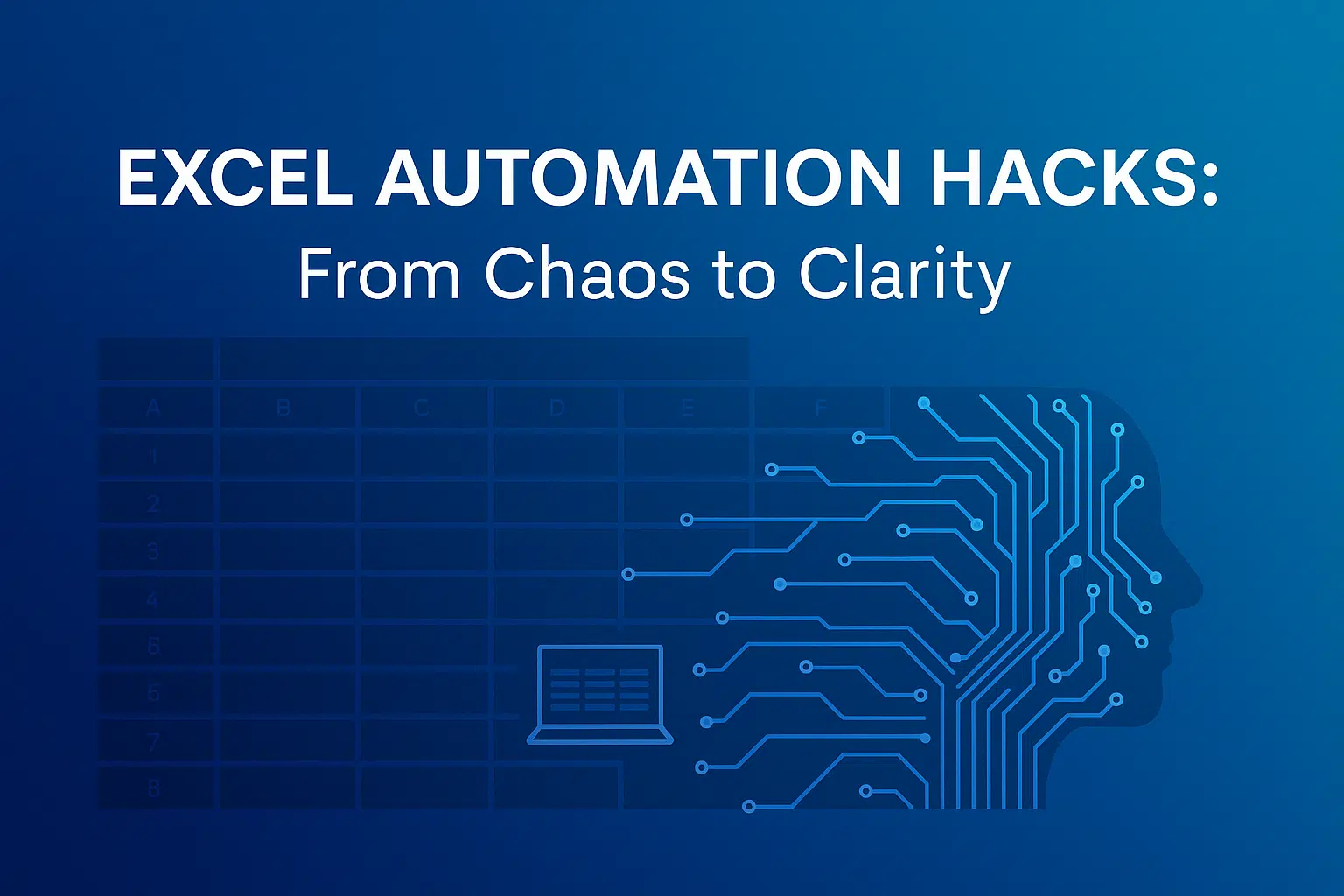Why Automate Excel?
Automation in Excel isn’t about replacing humans — it’s about removing friction. It’s the difference between updating 20 reports by hand and watching a script do it for you while you grab coffee. For small teams and entrepreneurs, that shift adds up fast.
- Save time: Replace repetitive copy-paste routines with one-click macros or triggers.
- Reduce errors: Automated calculations and checks ensure accuracy across sheets.
- Improve visibility: Dashboards update in real time, so decisions happen faster.
- Increase scalability: Automated templates let you handle more clients, invoices, or datasets without extra staff.
1. Master the Macro: Your New Best Friend
If you’re new to automation, start with macros — small scripts that record and repeat actions. Think of them as “Excel on autopilot.” You can record one for tasks like formatting, sorting, or importing data.
Better yet, write or tweak your own in VBA (Visual Basic for Applications). A single script can pull data from multiple sheets, merge them, and export summaries automatically.
Example: run a macro that fetches yesterday’s sales figures from your CRM, cleans duplicates, and updates your KPI dashboard before 9 a.m. every morning. That’s automation you can feel.
2. Let AI Do the Heavy Lifting
AI is revolutionising Excel. Features like Copilot for Microsoft 365 now understand natural language commands — “Create a chart showing sales by region” — and instantly generate formulas or visuals.
For those outside Microsoft’s ecosystem, tools like Power BI and Make.com connect Excel with external data sources and automate workflows between apps. Suddenly, Excel isn’t a static file — it’s part of a live data system.
3. Automate Data Imports and Cleaning
Manual imports are where mistakes happen. Automation changes that. Using Power Query or macros, Excel can:
- Import data automatically from CSVs, APIs, or cloud drives.
- Apply cleaning rules on the fly (trim spaces, fix cases, remove duplicates).
- Append new data to existing tables without breaking links.
That means no more “missing row” panic at month-end — just clean, predictable data every time you open your file.
4. Build Dashboards That Update Themselves
Forget static charts. Dynamic dashboards are the new standard.
Combine pivot tables, slicers, and dynamic ranges with automation triggers to refresh data at intervals. You can even link them to Power Automate or Google Sheets integrations to update visual reports automatically.
The result: your KPIs, financials, or project trackers stay current without anyone lifting a finger.
5. Integrate Excel with Your Ecosystem
Today’s Excel plays well with others. Connect it to your accounting software, CRM, or cloud storage through APIs. Imagine automatically pulling invoice data from Xero or exporting client reports straight to a shared OneDrive folder.
This kind of integration turns Excel into a real-time nerve centre for your business — one that talks to your other systems and eliminates endless manual transfers.
6. Automate Alerts and Actions
Want Excel to email you when inventory drops below a threshold? Or send a Slack message when a KPI turns red? With conditional logic and integrations, that’s now possible.
Platforms like Power Automate or Zapier can monitor spreadsheet changes and trigger actions in other apps. It’s like giving your data the ability to raise its hand when something needs attention.
7. Create Reusable Templates
Once your spreadsheet works perfectly, don’t rebuild it — clone it. Save your best dashboards, invoices, and trackers as automation-ready templates. Add named ranges, macros, and instructions so anyone can use them without breaking your formulas.
That’s how teams grow consistently without reinventing the wheel each quarter.
The Payoff: Time, Clarity, and Confidence
Excel automation isn’t about being flashy. It’s about getting your life back. You stop firefighting and start focusing on insights. You make faster decisions because your data is always clean, current, and clear.
Small business owners who embrace automation report up to 30 % more productivity and 25 % fewer reporting errors, according to Microsoft’s 2025 Work Trend Index.
How Marbella Tech Solutions Helps
We design custom Excel automation systems that bridge human skill and machine precision. From macro-driven reports and AI data insights to full CRM integrations, our solutions help businesses move from clutter to clarity — saving hours each week while improving accuracy.
Ready to automate your workflow? Let’s talk. We’ll map your current setup, identify the biggest time sinks, and create automations that make Excel work for you, not against you.

